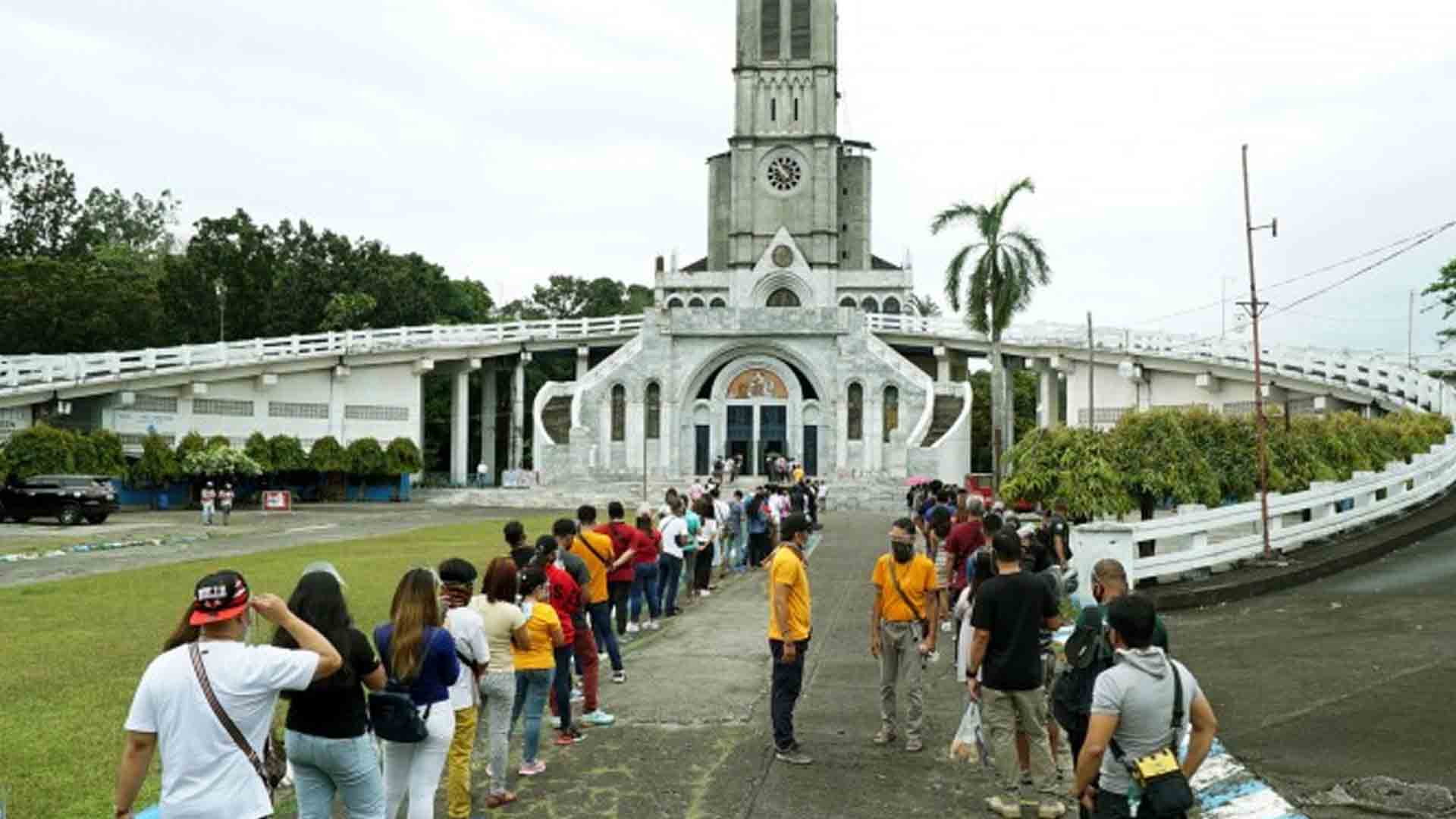Despite the relaxed health protocols on the coronavirus disease 2019 (Covid-19), devotees of the Our Lady of Lourdes Grotto-Shrine in San Jose del Monte City, Bulacan will continue to miss the traditional penitential walk or “Alay Lakad” from various points of Metro Manila to the shrine site this coming Holy Week.
The Shrine of Our Lady of Lourdes Grotto (SOLLG) staff said in compliance with the guidelines issued by the local government unit (LGU) of San Jose del Monte City, in coordination with the Inter-Agency Task Force (IATF) on the Management of Emerging Infectious Diseases, the church and grotto-shrine will be opened to devotees on a limited time-scale from April 1 to 15, 2022.
Masses in the basilica-church proper will be held in full capacity between 6 a.m. and 6 p.m. and visits to the grotto itself will be allowed during the same time only. The existing health protocol like wearing of facemask will still be observed.
There will be no overnight vigil within the vast grotto-shrine complex, unlike in the previous years until 2019, or a year before the Covid-19 pandemic began.
After every mass, the church proper will be vacated to accommodate the next batch of devotees waiting in line outside.
By 6 p.m., the main gates along the Sta. Maria-Tungkong Mangga Road will be closed for the entire night and will be reopened at 6 a.m. to accommodate early devotees.
During the 2020 and 2021 Lenten season, all religious activities at the shrine complex were suspended due to the imposition of the enhanced community quarantine as part of the national government’s policy to contain the effects on human lives of the dreaded virus.
This Lenten season, because of the April 1-15 limitations on the religious activities of the grotto-shrine, there will be no traditional Palm Sunday observance at the Bulacan shrine on April 10.
The annual penitential walk or Alay-Lakad being done by thousands of devotees on the night of Maundy Thursday also will not be held, along with the Good Friday afternoon procession.
Until the Holy Week of 2019, the yearly penitential walk activity was undertaken by thousands of pilgrims from various places of Metro Manila, particularly Quezon City and Caloocan City, including Novaliches, Valenzuela City, Meycauayan City, Malabon City, and Navotas City.
They used to traverse by foot the more than 20-kilometer distance from MacArthur Highway in Barangay Malinta in Valenzuela City or Balintawak, Quezon City, passing through either the old Novaliches-Polo Road or Quirino Highway which lead from Novaliches to the grotto-shrine. Many others passed through Commonwealth Avenue from the Quezon Memorial Circle in Quezon City.
How did the Bulacan grotto-shrine come into existence about 57 years ago?
Situated about 30 kilometers northeast of Manila and just beyond the boundary of Bulacan and Novaliches, the grotto-shrine was opened for public veneration on the Feast of Our Lady of Lourdes on Feb. 11, 1965.
According to Marietta G. Holmgren in the book, “The Grotto-Shrine of Our Lady of Lourdes in the Philippines,” her mother, Anita Guanzon, decided to build the shrine on the family-owned 25-hectare land in San Jose del Monte as an act of thanksgiving for her being cured miraculously of cancer after a pilgrimage to the town of Lourdes in southwestern France in 1961.
The grotto-shrine’s attractions include the Calvary Hill that features 14 Stations of the Cross that portray the agony of Jesus Christ. There are 127 statues presented in dioramas that took three years to build, according to the book.
There is also the Rosary Hill, with 155 very big beads made of concrete together weighing over eight tons and is said to be the biggest Tri-Rosary in the world.
In 1974, Irish-born Roman Catholic priest Patrick Peyton came to the Philippines from the United States to inaugurate the Rosary Hill. (PNA)







